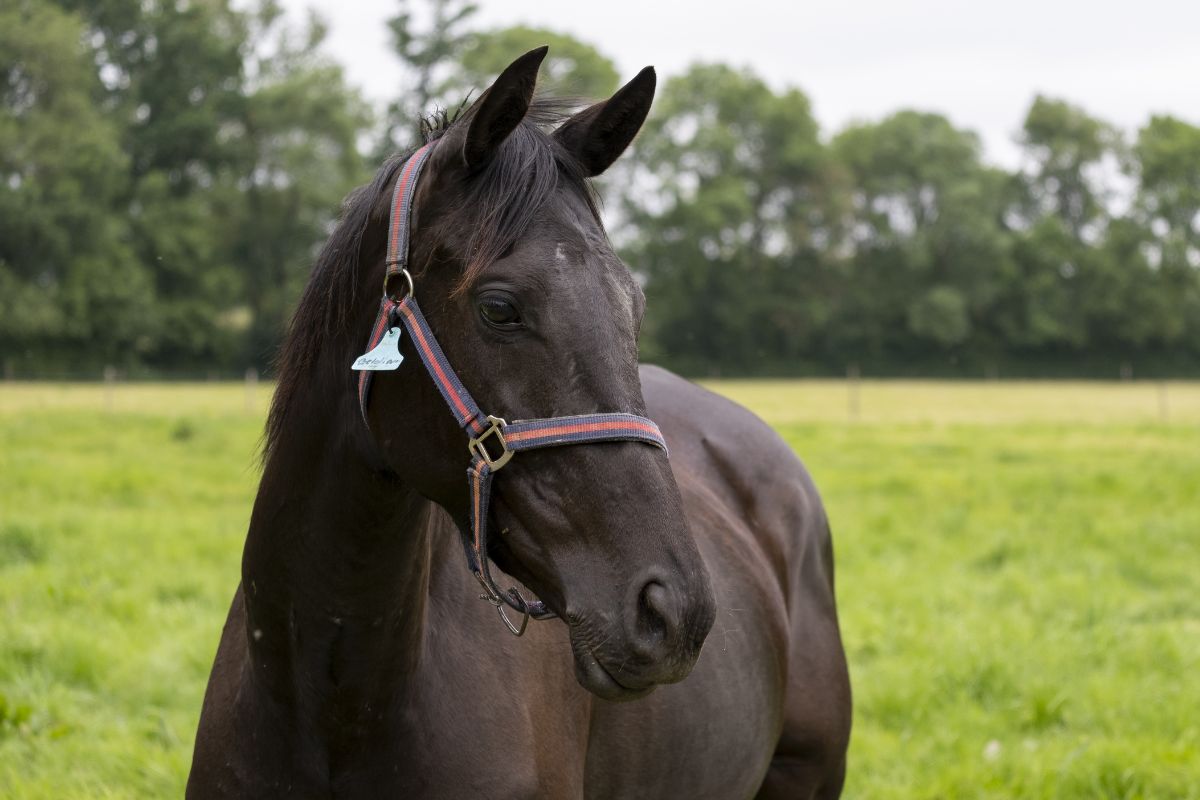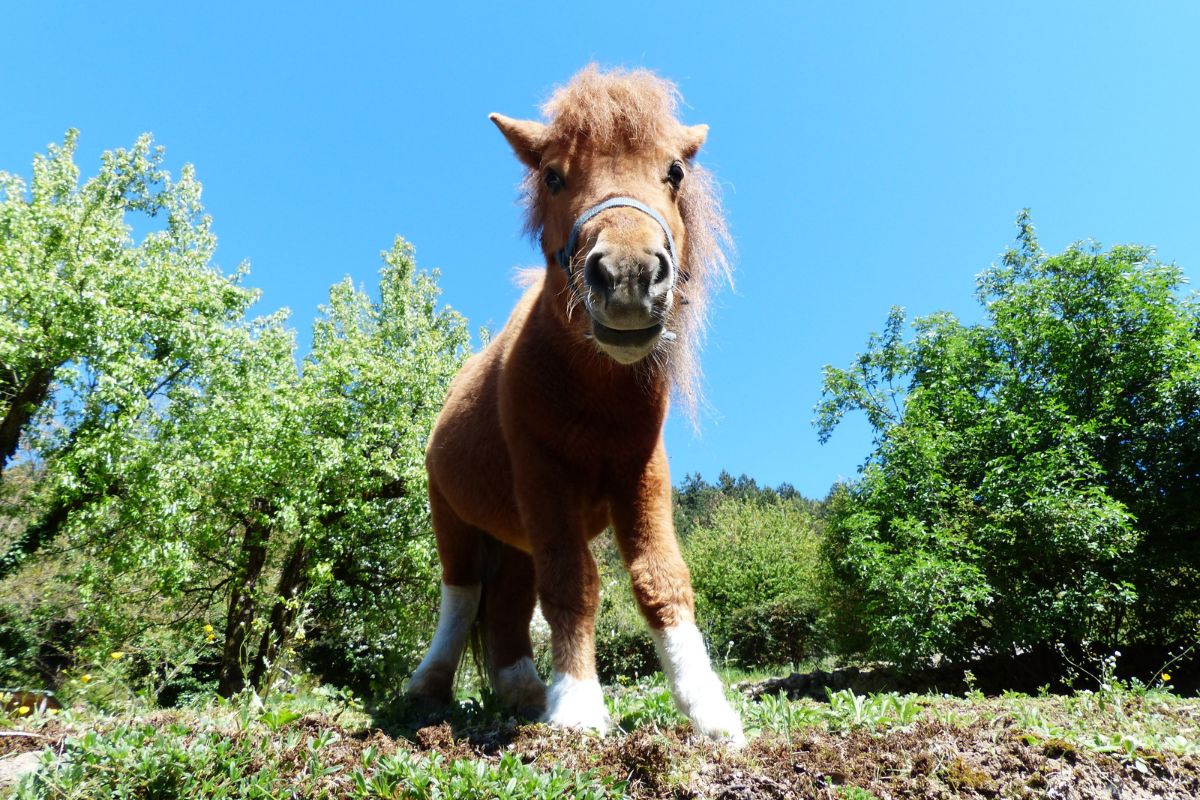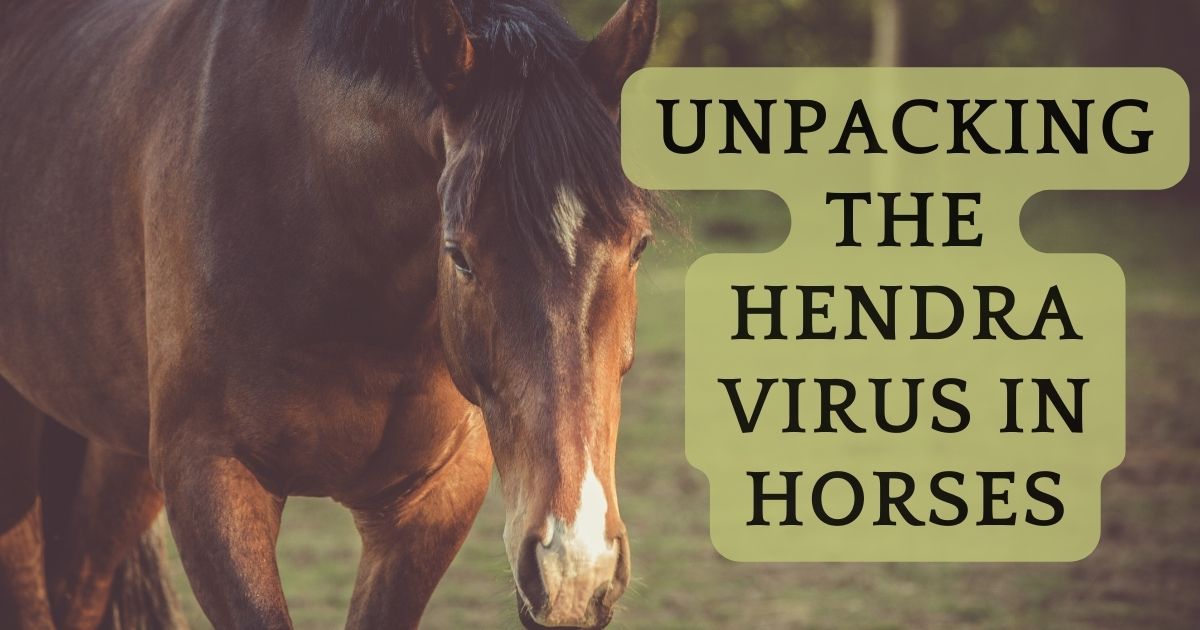What is HeV?
Hendra virus infection is a viral disease that may cause acute fatal respiratory and/or neurologic signs in horses of all ages.
It is an acute disease of horses transmissible to humans and characterized in horses by fever and respiratory distress that occurs uncommonly in northeastern Australia.
People and canines in close contact with clinically infected horses are at high risk of contracting the virus.

When was the Hendra Virus First Identified?
The first observation of the Hendra virus was in 1994 after an outbreak of the acute respiratory disease in a Thoroughbred training stable in Australia. Horses and one person were fatally infected.
The disease is associated with the recently recognized equine Hendra virus (Henipavirus in the family Paramyxoviridae, formerly equine morbillivirus), which is closely related to the Nipah virus and more distantly related to Menangle virus, both of which cause disease in pigs and humans.
This type of disease is known as a zoonotic disease, which means that horses pass it to humans.
Hendra virus was formerly known as equine morbillivirus.
Sporadic cases continue to occur in eastern Australia, typically presenting as an acute febrile illness and rapidly progressing with variable system involvement, notably acute respiratory and/or severe neurologic disease.
On two separate occasions of fatal Hendra virus infection in horses, the contamination of a single dog on the same horse property with the Hendra virus without clinical signs occurred.
Fruit bats of the genus Pteropus (family Pteropodidae), colloquially known as flying foxes, were shown to be the reservoir of the virus and the putative source of infection for horses.
HeV Signs and Symptoms
The symptoms in a horse can include:
- Frothy nasal mucus
- High temperature
- Rapid heart rate
- Sweating
- Muscle spasms and twitching
- Muscle weakness
- Balance difficulties
- Rapid deterioration.
- Wobbly gait
The symptoms of infection in a person can include:
- Fever
- Headache
- Dry cough
- Sore throat
- Breathing difficulties
- Dizziness
- Unusual sleepiness
- Confusion.
Available Treatment Options Against the Hendra Virus
Treatment for the Hendra virus is not a specific treatment, and antiviral medications are ineffective against the virus.
Treating horses showing mild clinical signs are mainly supportive to relieve symptoms and reduce complications.
In the case of acute disease, where the symptoms are severe in nature, the horses should typically undergo euthanization to relieve suffering.
How is HeV Transmitted?
Transmission is by inhalation and ingestion due to the presence of the virus in nasal, pharyngeal, vaginal discharges, and fecal matter.
The virus gets excreted for seven days after infection. The transmission rate is high, especially in the genital form.
The virus has a specific tropism for vascular tissues. In early infection, the vascular lesions may include edema and hemorrhage of vessel walls, fibrinoid degeneration with pyknotic nuclei in endothelial and tunica media cells, and numerous giant cells in the endothelium and sometimes the tunica media of affected vessels.
As the infection progresses, the virus distributes itself through various tissues in the body due to viremia.
The virus is present in the vascular endothelium of subarachnoid and cerebral vessels and the vasculature of the renal glomerulus and pelvis, lamina propria of the stomach, spleen, various lymph nodes, and myocardium.
When the respiratory system is involved, there is progressive destruction of the alveolar walls, with the appearance of alveolar and intravascular macrophages.
Hendra virus can also be neurotropic, causing neuronal necrosis and focal gliosis. During one of the outbreaks in an equine clinic in Australia, the disease manifested itself only through severe neurological symptoms, and no respiratory symptoms were present.

Diagnosing the Hendra Virus
Viral isolation, PCR, or serology are the diagnostic methods of choice.
Laboratory examination of specimens to detect virus, viral antigen, viral nucleic acid, or specific antibodies confirm the diagnosis.
Minimum recommended samples include a blood sample and nasal, oral, and/or rectal swabs. Sample collection is possible from both live and dead horses.
The approach to specimen collection must consider the Hendra virus’s serious zoonotic potential and incorporate appropriate measures to avoid human exposure and infection.
Necropsy specimens, fresh and fixed in 10% formalin, of the lung, kidney, spleen, liver, lymph nodes, and brain will increase the likelihood of a definitive diagnosis.
The veterinarian in charge determines the number and type of specimens that have to be collected. Many factors, including personal protective equipment, training, and prior experience, choose how many samples and types are needed.
If there are personal safety concerns, only a minimal set of samples is collected. A combination of EDTA blood, serum, nasal, oral, and rectal swabs is sufficient to detect Hendra virus infection in a horse suspected to be infected.
The presence of the characteristic vascular lesions on histopathology is highly suggestive of the infection.
African horse sickness can clinically mimic Hendra virus infection. Other causes of sudden death, such as anthrax and botulism, are always part of the differential diagnosis.
The Risk of Exposure
The closer the contact one has with horses, the greater the risk. Keeping yourself safe is of utmost importance.
Using Personal Protective Equipment has proven to be highly effective in contracting the illness. There have been no reported cases of Hendra in people wearing PPE.
Practice good hygiene principles when wearing PPE:
- Avoid touching your mouth, eyes, and nose,
- Cover any cuts or grazes with a water-resistant dressing under PPE
- Do not eat or drink while wearing PPE,
- Thoroughly wash hands and face after removing PPE & shower before handling other animals.
When working on properties and in contact with potentially infected animals or materials;
- Waterproof footwear, i.e., gumboots
- Disposable overalls
- Gloves
- P2 facemask – Full-face powered air respirator preferred
- Protective eyewear
When working on properties without contact with potentially infected animals or materials (i.e., working >5m from an infected animal/site);
- Waterproof footwear, i.e., gumboots
- Disposable overalls
- Gloves
How Can HeV be Prevented?
We can prevent the Hendra virus through vaccination protocols.
The vaccine contains a noninfectious protein component of the virus. It has been available through accredited veterinarians in Australia since 2012.
Healthy horses are vaccinated from four months of age with two doses at a twenty-one-day interval, followed by boosters every twelve months.
Hendra virus is classified as a biosafety Level 4 agent, posing a high risk of life-threatening disease.
The use of safe work practices and personal protective equipment is essential to manage the risk of human exposure.
Prevention is focused on minimizing contact with fruit bat body fluids/contaminants and includes simple, practical measures such as:
- Placing feed and water containers under cover
- Minimizing the number of bat food trees/shrubs in horse paddocks
- Excluding horses from the vicinity of such trees/shrubs.
- Isolation of new horses to your property, especially if they have traveled or co-mingled at equine events with horses from areas where Hendra cases have been previously present.
- Carefully monitor their health and report any signs of illness early.
Control measures used are:
- Euthanasia and deep burial of infected cases.
- Monitoring, isolating, and restricting the movement of animals.
- Disinfection of potentially contaminated surfaces.
Can the Hendra Virus be Transmitted to Humans?
The transmission of the Hendra virus from horses to humans occurs rarely. When it does happen, though, the consequences are severe and can be life-threatening.
Direct transmission has not occurred from bats to humans, human-to-human, or other species-to-human species. The main risk factor in the horse-to-human transmission is close occupational contact with horses.
People must seek medical advice immediately after close contact with infected animals or materials has occurred.

Conclusion
Hendra virus, when contracted, can have devastating consequences for humans and horses.
Unfortunately, no treatment is available to this date.
However, as mentioned throughout the article, occurrence in humans is a rare event.
By following preventative measures and vaccinating your horses, you can keep this virus away from your horses and yourself.
Always maintain high hygiene standards, and if you suspect any sign of infection, contact your doctor and veterinarian immediately. Read our article and find out What You Should Know About The Five-Way Horse Vaccine.
